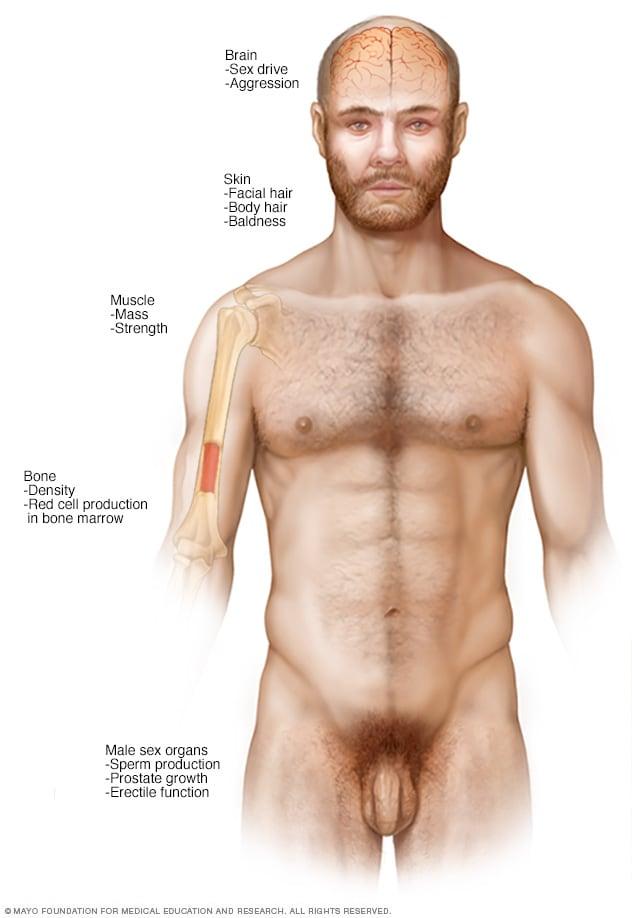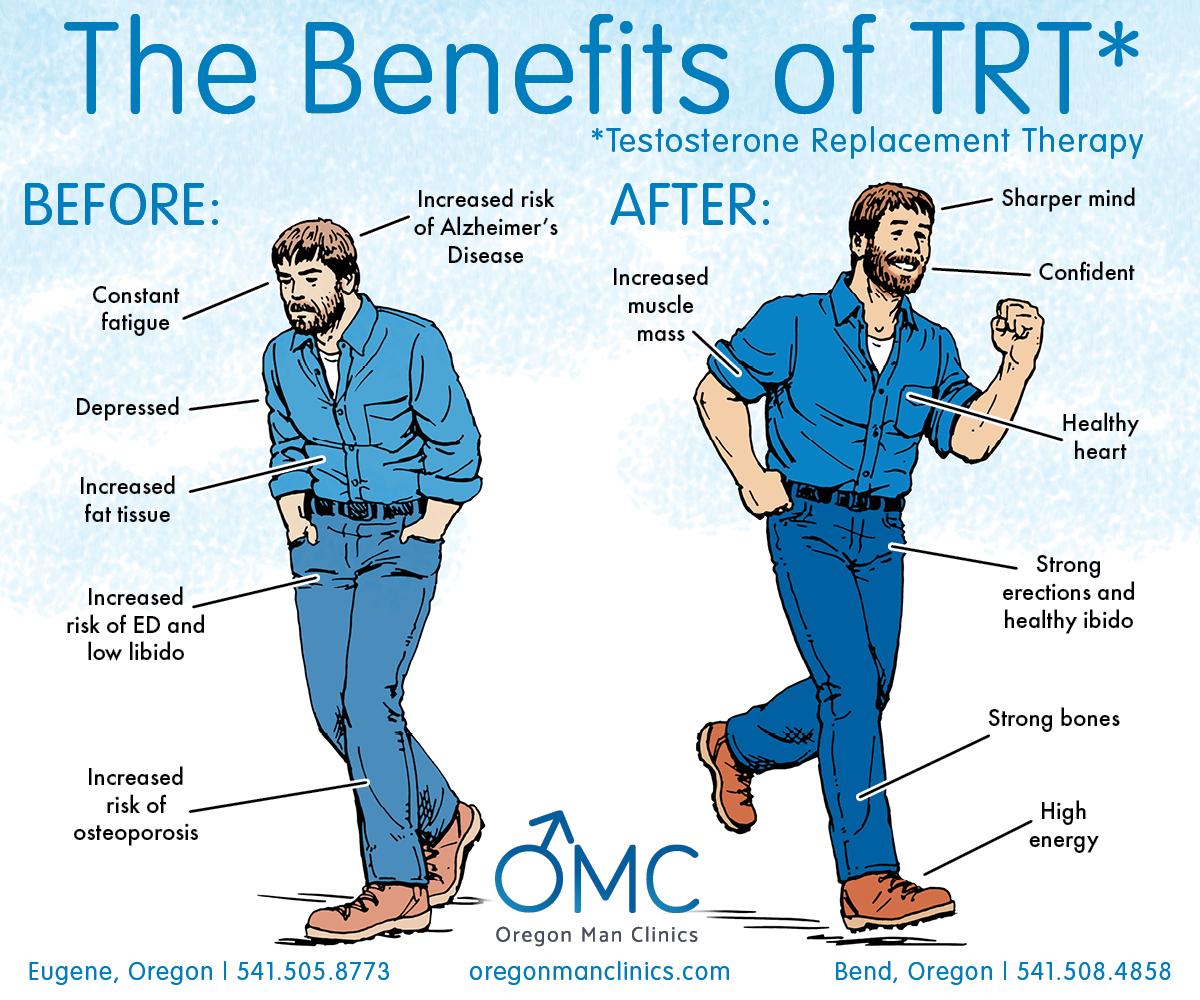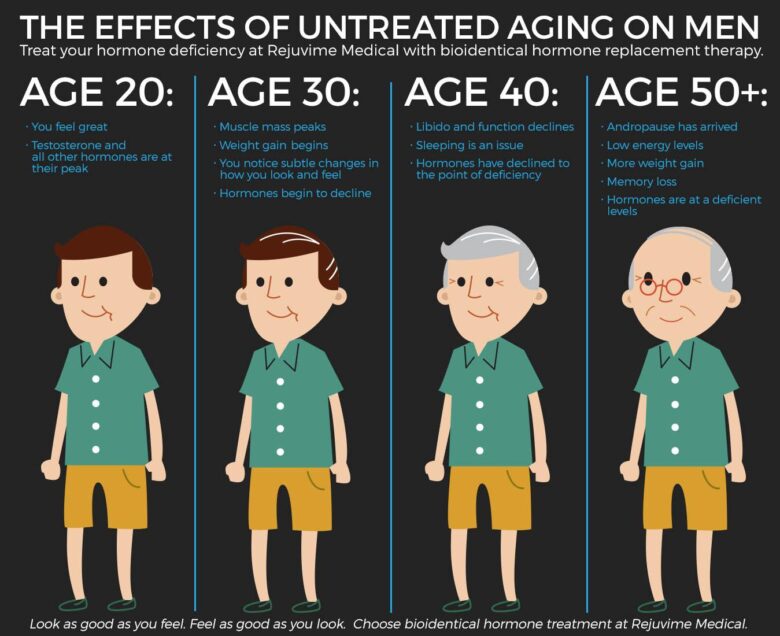As the sands of time slip through the hourglass, men often find themselves grappling with an invisible adversary: aging. With each passing year, vitality may wane, energy levels might dwindle, and those once sharp mental faculties can seem dimmed. Amidst this natural progression, the conversation surrounding testosterone therapy has surged to the forefront, presenting both a beacon of hope and a target of scrutiny. This article delves into the multifaceted world of testosterone therapy for aging men, exploring its potential benefits, the science behind hormonal balance, and the implications for health and wellness in the pursuit of an enriched and active life. Join us on this journey as we navigate the complex interplay of biology, age, and the quest for vitality in the golden years.
Understanding Testosterone Deficiency and Its Impact on Aging Men
As men age, the natural decline in testosterone levels can lead to a condition known as testosterone deficiency. This hormonal imbalance is often characterized by a range of physical, emotional, and mental changes. Common symptoms include fatigue, reduced libido, muscle loss, and mood swings. Understanding the profound impact that low testosterone can have on well-being is crucial. It affects not only physical health but can also impair cognitive functions, leading to issues such as memory loss and difficulty concentrating. Addressing testosterone deficiency is essential for maintaining a quality lifestyle in aging men.
The decision to pursue testosterone therapy can be a pivotal moment in managing these symptoms. There are various treatment options available, including injections, patches, and gels. It’s important to evaluate the benefits and risks associated with each method. Below is a simplistic overview of each option:
| Type of Therapy | Administration | Frequency | Pros | Cons |
|---|---|---|---|---|
| Injections | Intramuscular | Every 1-3 weeks | Quick results | Needles required |
| Patches | Transdermal | Daily | Consistent dosing | Skin reactions possible |
| Gels | Transdermal | Daily | Easy to apply | Risk of transfer to others |
Prior to starting any treatment, a thorough evaluation by a healthcare provider is crucial to assess Testosterone levels and overall health. Regular monitoring during therapy is equally important to ensure that testosterone levels remain within target ranges and to mitigate any potential side effects. Evaluating the effectiveness of the treatment through symptoms and blood tests can help in making informed decisions that benefit aging men in their journey toward a healthier and more vibrant life.

Key Benefits of Testosterone Therapy for Enhanced Vitality and Wellness
Testosterone therapy has garnered attention for its potential to rejuvenate the health and vitality of aging men. By restoring hormone levels to their optimal range, individuals may experience a remarkable improvement in various aspects of their lives. Physical stamina often sees a notable boost, allowing for improved workout performance and increased endurance during daily activities. Additionally, many report a greater sense of mental clarity and focus, contributing to enhanced productivity both at work and in personal pursuits. Other benefits may include:
- Improved mood: Decreased feelings of irritability and depression.
- Enhanced libido: Increased sexual desire and satisfaction.
- Increased muscle mass: Aiding in strength training and overall fitness.
Moreover, testosterone therapy can significantly impact metabolic functions, promoting better body composition by reducing fat mass and increasing lean muscle. This shift not only bolsters overall health markers but also fosters self-confidence as physical appearance improves. As part of a comprehensive wellness strategy, these benefits contribute to an enriched quality of life. Below is a simple overview of specific health improvements associated with testosterone therapy:
| Health Improvement | Description |
|---|---|
| Bone Density | Strengthened bones reducing fracture risk. |
| Cardiovascular Health | Improved circulation and heart function. |
| Energy Levels | Increased vitality and reduced fatigue. |

Evaluating the Risks: What Every Man Should Know Before Starting Therapy
Before embarking on testosterone therapy, it’s crucial to understand the potential risks that accompany this medical treatment. While testosterone replacement can offer benefits such as improved energy and mood, men should remain aware of possible side effects that may impact their overall health. Key risks include:
- Cardiovascular Issues: An increase in blood pressure and heightened risk of heart attack or stroke.
- Prostate Health: Potential exacerbation of prostate cancer or benign prostatic hyperplasia (BPH).
- Sleep Apnea: Worsening of existing sleep apnea or the onset of new sleep-related breathing problems.
- Reproductive Changes: Decreased fertility and potential testicular shrinkage.
- Skin Reactions: Acne, oily skin, or other dermatological responses.
In addition to these risks, it’s also vital for men to engage in thorough discussions with healthcare providers about their medical history and lifestyle. Regular monitoring during treatment can help mitigate risks and ensure optimal outcomes. Below is a simplified table highlighting essential factors to consider:
| Factor | Considerations |
|---|---|
| Age | Assess age-related hormonal changes. |
| Health History | Evaluate any pre-existing health conditions. |
| Doctor’s Input | Follow guidelines provided by healthcare professionals. |
| Monitoring | Regular blood tests and health evaluations. |

The Role of Lifestyle Changes in Complementing Testosterone Treatment
Integrating lifestyle changes alongside testosterone therapy can significantly enhance the effectiveness of treatment while promoting overall well-being. Men undergoing testosterone therapy often experience a range of benefits, but incorporating specific lifestyle adjustments can magnify these effects. Some key changes to consider include:
- Regular exercise: Engaging in both aerobic and strength training can positively impact hormone levels.
- Balanced diet: Consuming nutrient-rich foods such as lean proteins, healthy fats, and whole grains supports hormonal health.
- Quality sleep: Prioritizing restorative sleep enhances recovery and hormone production.
- Stress management: Implementing mindfulness practices and relaxation techniques can lower cortisol levels, allowing testosterone to work more efficiently.
- Avoiding alcohol and tobacco: These substances can adversely affect testosterone levels and overall health.
To illustrate the synergistic effect of lifestyle changes and testosterone therapy, consider the following table which outlines common benefits observed with specific lifestyle modifications:
| Lifestyle Change | Potential Benefits |
|---|---|
| Regular Exercise | Increase in energy, improved mood, enhanced libido |
| Healthy Diet | Better weight management, improved overall health, increased testosterone levels |
| Quality Sleep | Enhanced cognitive function, improved emotional stability, higher testosterone production |
| Stress Management | Improved mental health, better relationships, increased testosterone responsiveness |
Navigating the Different Forms of Testosterone Replacement Options
As men age, their testosterone levels often decline, leading to various physical and emotional symptoms that can significantly impact quality of life. Fortunately, several testosterone replacement options are available to help manage these changes. Each option has its unique features, benefits, and drawbacks, making it crucial for individuals to carefully consider what aligns with their lifestyle and health needs. Common forms of therapy include:
- Injections: Administered intramuscularly or subcutaneously, these treatments typically require a healthcare professional for administration, though some men prefer the self-injection option.
- Patches: Transdermal patches are applied to the skin, releasing testosterone steadily into the bloodstream and eliminating the need for regular injections.
- Gels: Similar to patches, testosterone gels are applied to the skin, allowing for easier daily use while providing stable hormone levels.
- Pellets: For those wary of daily applications, subcutaneous pellets can be implanted in the body, providing a slow, continuous release of testosterone over several months.
Choosing the most suitable testosterone replacement therapy involves considering factors such as compliance, frequency of administration, and potential side effects. Below is a comparison table that highlights key aspects of each option:
| Option | Administration Frequency | Pros | Cons |
|---|---|---|---|
| Injections | Weekly to biweekly | Rapid action | Discomfort at injection site |
| Patches | Daily | Stable hormone levels | Skin irritation |
| Gels | Daily | Convenient and easily absorbed | Risk of transfer to others |
| Pellets | Every 3-6 months | Long-lasting effects | Requires minor surgical procedure |
Monitoring and Adjusting Treatment: A Guide for Patients and Physicians
Monitoring testosterone therapy is crucial for ensuring that patients receive the appropriate benefits while minimizing potential side effects. Regular follow-ups are essential to assess the efficacy of the treatment, which may involve both clinical evaluations and laboratory tests. To facilitate this process, patients and physicians should consider the following key indicators for monitoring:
- Symptom Improvement: Track changes in energy levels, mood, libido, and cognitive function.
- Laboratory Tests: Measure testosterone levels regularly, along with hematocrit, PSA, and lipid profiles.
- Side Effects: Be vigilant for any adverse reactions, such as increased erythrocytosis, mood swings, or sleep apnea.
Adjusting treatment may be necessary based on the monitoring outcomes. It’s vital to have a collaborative approach where both patient and physician engage in open discussions regarding symptoms and test results. When modifications are needed, they can include:
| Adjustment Type | Considerations |
|---|---|
| Dosage Change | Increase or decrease the testosterone dosage based on symptom relief and blood levels. |
| Formulation Switch | Consider different delivery methods such as injections, patches, or gels if side effects are significant. |
| Additional Treatments | Incorporate medications to address side effects like mood disorders or sleep apnea if they arise. |
Embracing a Holistic Approach to Aging: Integrating Therapy with Health Improvement Strategies
As men enter the later stages of life, the complexity of aging often necessitates a comprehensive strategy that combines both physical and psychological wellness. The intersection of testosterone therapy and mental health is particularly noteworthy, as low testosterone levels can significantly impact emotional well-being, leading to increased feelings of depression and anxiety. By focusing on a balanced regimen that includes therapy—be it cognitive behavioral therapy or mindfulness practices—along with testosterone replacement, men can cultivate a vibrant and fulfilling life. This holistic method ensures individuals do not just seek isolated fixes, but rather full-bodied approaches that promote overall health.
Incorporating additional health improvement strategies alongside therapy goes hand in hand with the benefits of testosterone treatment. Some effective lifestyle changes include:
- Regular exercise: A blend of resistance and aerobic training can naturally boost testosterone levels.
- Nutritional adjustments: Diets rich in healthy fats, proteins, and vital nutrients support hormonal balance.
- Quality sleep: Establishing a routine that promotes restorative sleep aids in hormone production.
- Stress management: Techniques such as meditation and yoga can mitigate the effects of stress on hormone levels.
By integrating these approaches, men not only enhance the efficacy of testosterone therapy but also foster a sustainable lifestyle that embraces vitality and resilience. Understanding that each aspect of health plays a role in physical aging will help reshape how aging men view their journey, ensuring they’re not just surviving, but thriving with confidence.
Q&A
Q&A: Testosterone Therapy for Aging Men
Q: What is testosterone therapy, and why is it gaining attention among aging men?
A: Testosterone therapy involves the administration of testosterone to boost levels of the hormone in men who experience low testosterone (also known as “low T”) due to aging or other health conditions. As men age, testosterone levels naturally decline, which can lead to symptoms like decreased energy, reduced muscle mass, and mood changes. The therapy is gaining attention as more men search for solutions to combat these effects, seeking enhanced vitality and improved quality of life.
Q: How do I know if I need testosterone therapy?
A: Symptoms of low testosterone can vary widely. Common signs include fatigue, depression, reduced libido, and difficulty concentrating. If you suspect low testosterone is affecting your life, it’s best to consult a healthcare professional. They can perform a simple blood test to measure your testosterone levels and discuss potential treatment options tailored to your individual needs.
Q: What are the potential benefits of testosterone therapy?
A: Many men report significant improvements in various areas of health and well-being after starting testosterone therapy. Benefits may include increased energy levels, improved mood, enhanced muscle mass, and a more robust libido. Some studies also suggest that testosterone therapy could support bone density and overall cognitive function, although more research is needed in these areas.
Q: Are there risks associated with testosterone therapy?
A: Like any medical treatment, testosterone therapy comes with potential risks and side effects. These may include an increased risk of cardiovascular issues, sleep apnea, acne, and fluid retention. Additionally, it can impact prostate health, so regular monitoring is essential. Discussing your health history and any concerns with your doctor can help you weigh the benefits against the risks before starting treatment.
Q: Can lifestyle changes also help improve testosterone levels?
A: Absolutely! Many men can see improvements in testosterone levels through lifestyle modifications. Regular exercise—especially strength training—healthy eating, maintaining a healthy weight, managing stress, and getting sufficient sleep can all contribute to natural testosterone production. Sometimes, making these changes can even negate the need for therapy altogether.
Q: How is testosterone therapy administered?
A: Testosterone therapy can be delivered in several forms, including injections, patches, gels, and pellets inserted under the skin. The method you choose may depend on personal preference, convenience, and the advice of your healthcare provider. Each option has its own set of pros and cons, so discussing these with your doctor can ensure you find the best fit for your needs.
Q: How long does it take to see results from testosterone therapy?
A: The timeline for experiencing results from testosterone therapy can vary from person to person. Some may notice improvements in energy and mood within weeks, while changes in muscle mass and libido may take several months to manifest fully. Regular follow-ups with your healthcare provider can help monitor progress and adjust treatment as necessary.
Q: Is testosterone therapy a lifelong commitment?
A: Not necessarily. While some men may require ongoing therapy due to persistently low testosterone levels, others find that their symptoms improve with treatment for a period, allowing them to taper off under medical supervision. Ultimately, the decision should be based on your personal health goals and the recommendations of your healthcare provider.
Q: Where can I find more information about testosterone therapy?
A: If you’re considering testosterone therapy, it’s vital to educate yourself through reputable sources. Discussing your concerns and questions with healthcare providers who specialize in hormone health can provide you with tailored, professional advice. Online medical sites, academic journals, and support groups can also offer valuable insights and community experiences.
By understanding testosterone therapy and its implications, aging men can make informed decisions regarding their health and well-being as they navigate this integral phase of life.
Concluding Remarks
In the journey through the seasons of life, the quest for vitality and well-being in aging men has taken on a new dimension with the advent of testosterone therapy. As we uncover the complexities surrounding this treatment, from its promising benefits to the necessary precautions, it becomes clear that knowledge is paramount. Adopting a balanced perspective and engaging in informed discussions with healthcare professionals will empower men to make choices that resonate with their individual health goals. Ultimately, the decision to pursue testosterone therapy is a personal one, influenced by various factors including lifestyle, health, and personal aspirations. As we navigate this evolving landscape, may each man embrace the wisdom of his years and the possibilities that lie ahead, armed with a newfound understanding of the role hormones play in our lives. Let the conversation continue, and may well-being flourish in every chapter of life’s story.










